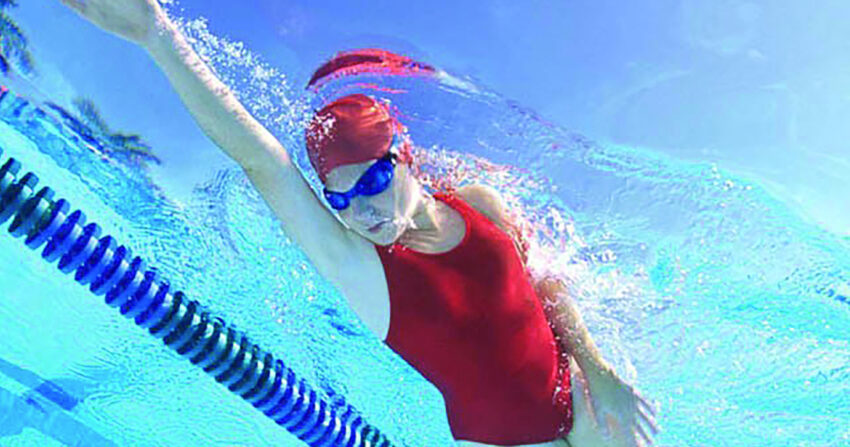
How Can I Swim Well in Rough and Choppy Conditions?
When there’s swell or chop I seem to struggle. I feel like a cork bobbing up and down with not much forward motion. I’ve tried breathing on the left only, on the right only and bilateral but nothing helps. Any suggestions? I come from a rugby background, so the back, shoulders and neck have taken a beating.
Ken Horwell (aka Mr Frustrated)
Terry says: Conventional wisdom on swimming in rougher waters is that you must stroke faster, swing your arms higher and ‘punch through’ chop and swells. As a former rugby player, you won’t lack strength or power. But in swimming you want to go in the opposite direction: do everything possible to reduce the power needed to swim as you wish.
Rather than punching through waves (it may work for the first, fifth, or tenth wave – but they keep coming, by the scores or hundreds) focus on minimising resistance and turbulence, both of which cost enormously of your finite and precious store of energy.
Start with a mental strategy: reframe the external conditions so that the water washes over you rather than knocks you around. Do this by concentrating on making yourself long and ‘slippery’. Here are some specific stroke adjustments for swimming well in ‘sporty’ conditions. Familiarise yourself with and imprint each of these in pool practice.

Focus on cutting through chop by ‘forming sleek lines’
1. Pierce the waves
Even in a calm pool, we typically waste more than 95 per cent of energy by moving around in water and moving the water around, rather than moving through it. In rougher water, energy waste is even greater. Focus on cutting through chop like an arrow through the air by ‘forming sleek lines,’ as shown, with each side of your body, rather than pulling and kicking. Three mini-skills (to be developed in pool practice) will help: (i) enter your hand a bit sooner, and slide your forearm through the ‘hole’ made by your fingers in the surface; then (ii) use your extending arm (below the surface) to lengthen your body and ‘separate’ the water molecules ahead of you; (iii) line up your body to slip through the sleeve of reduced resistance created by your arm.
2. Make every stroke count
When the water is moving around more it’s quite common to miss or slip on your catch; your hand moves back while doing little to move you forward. Stroking faster or harder makes this worse. Instead, take a nanosecond longer beginning each stroke, and press with more care and precision than force.
3. Be calmly observant
First of yourself, then of others. Listen for splash and noise, and watch for bubbles, in your own stroke and strive to eliminate. While in a pack, strive to be the calm and quiet centre of all those around you.
One great benefit of this approach is that it calms and centres your mind, even while saving massive amounts of energy. But don’t wait until your next event. Practise in the pool to make them feel like second nature. And test their effect on efficiency by comparing stroke counts for 25m between your usual stroke and the one you develop by practising these. TL
To teach yourself more energy-saving techniques, download Terry Laughlin’s Complete Self-Coaching Toolkit from totalimmersion.net/store
Terry Laughlin is founder and head coach of Total
Immersion and winner of six national masters championships since turning 55.







